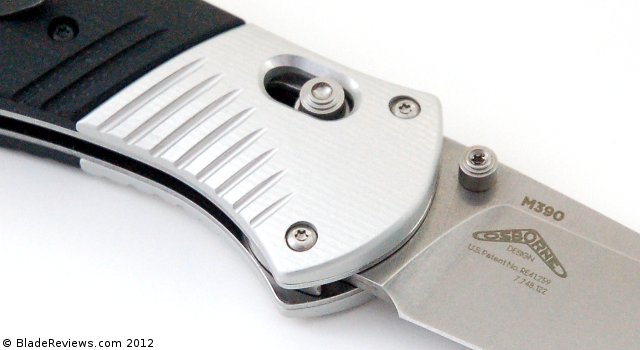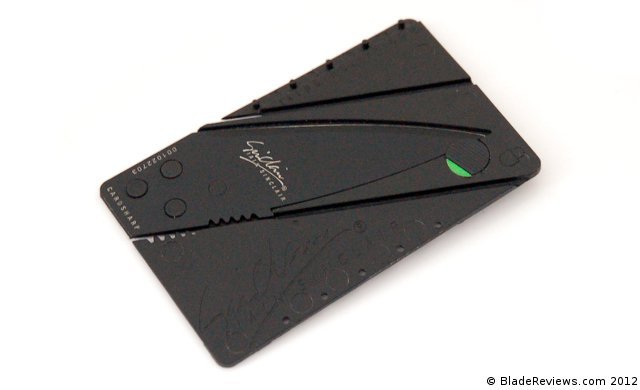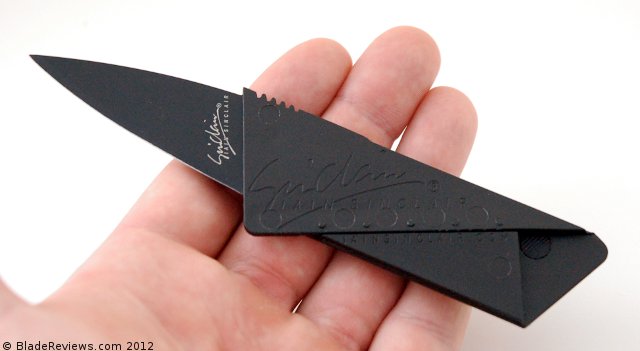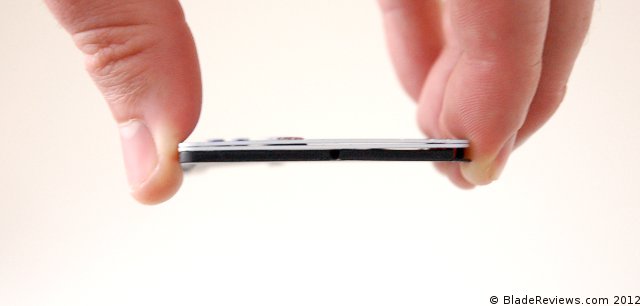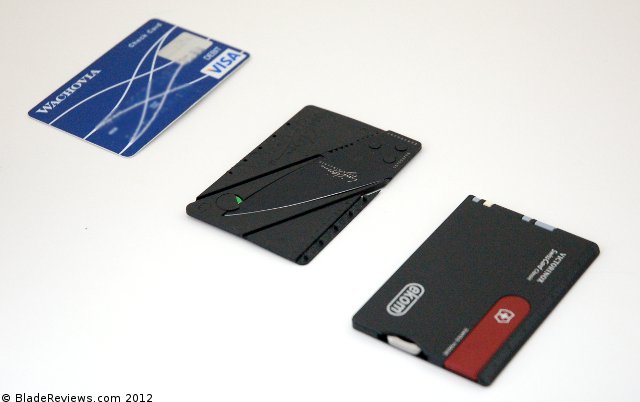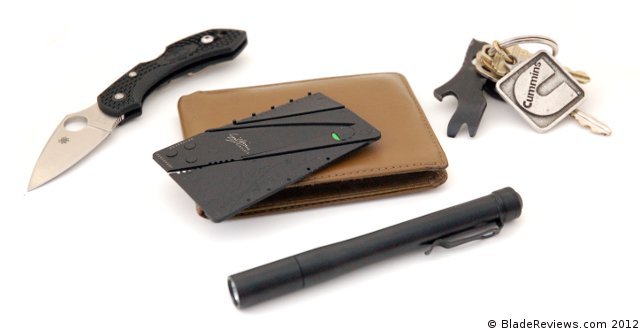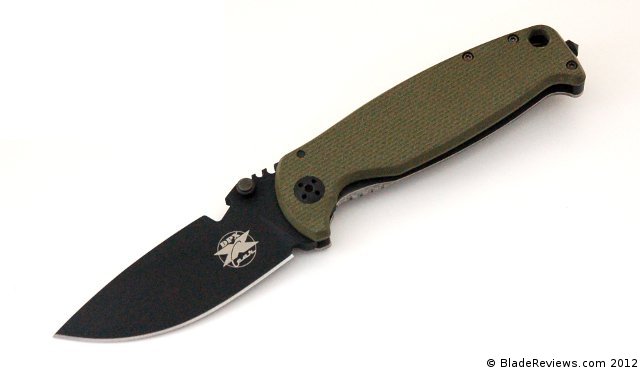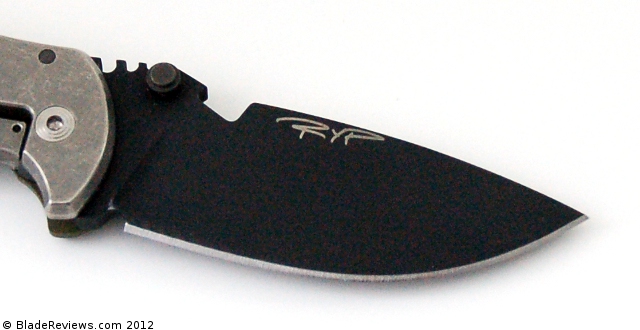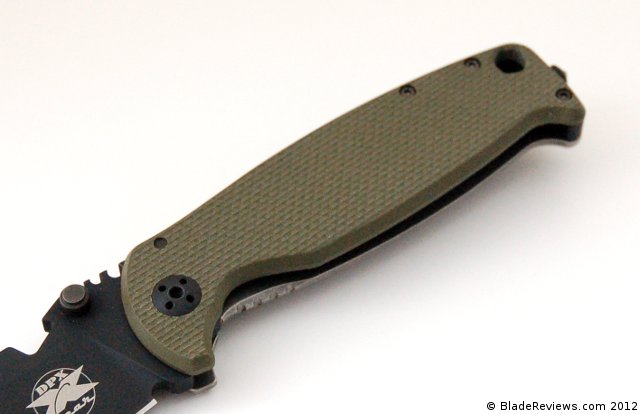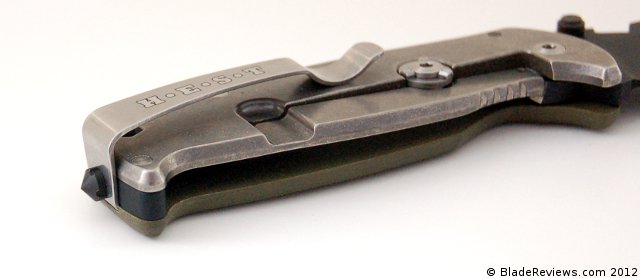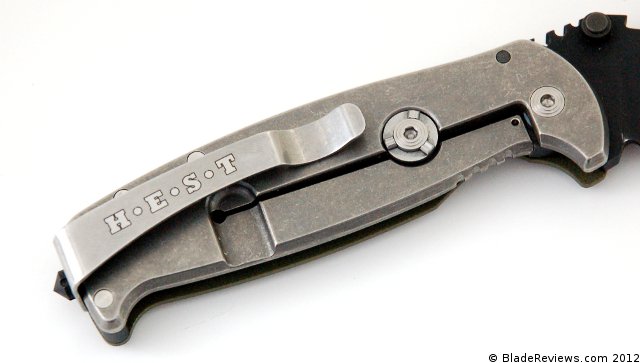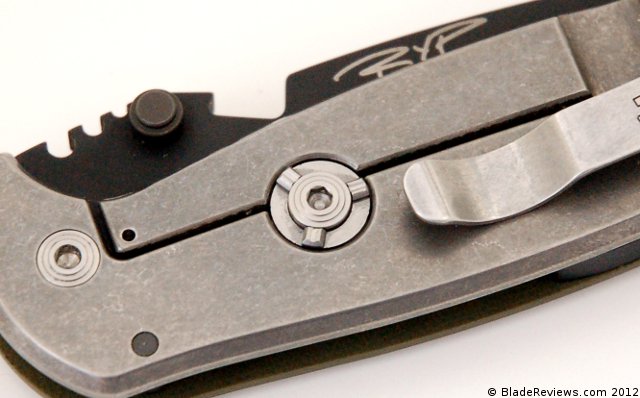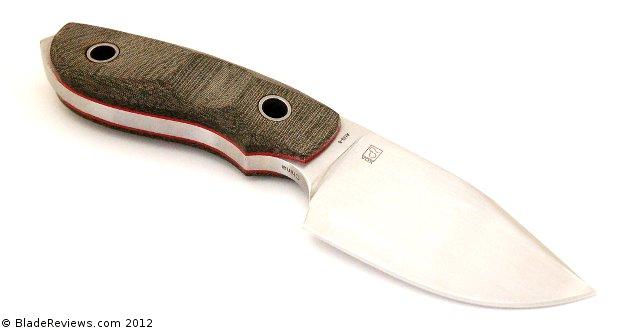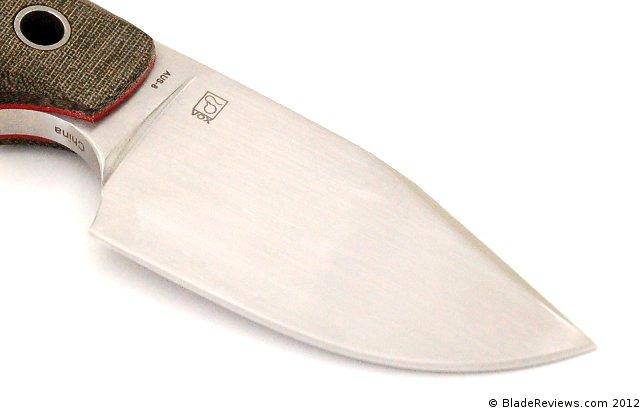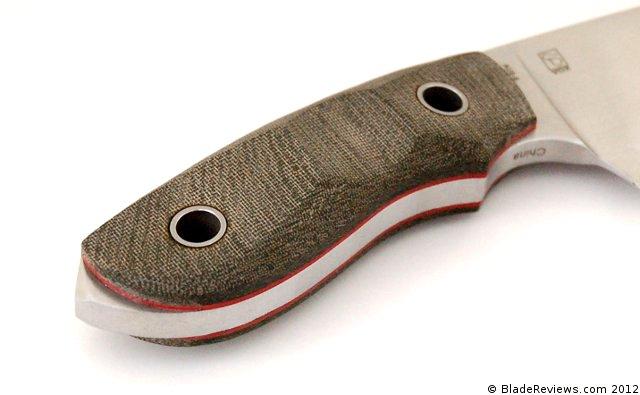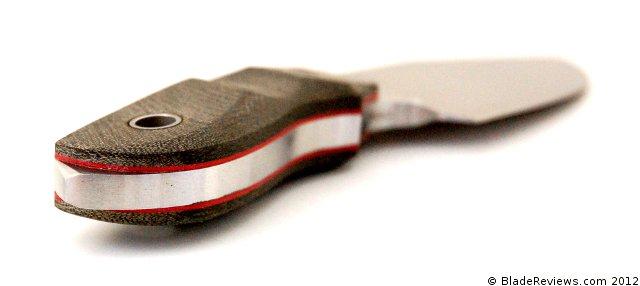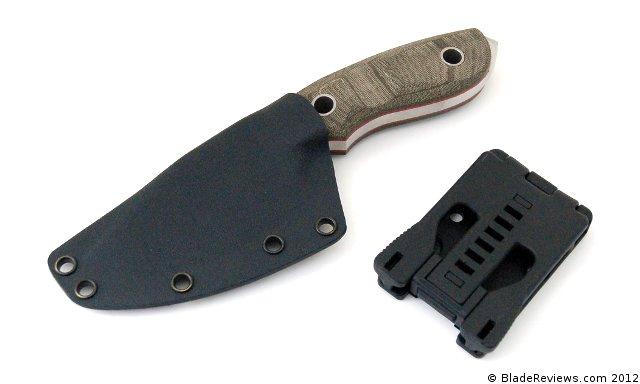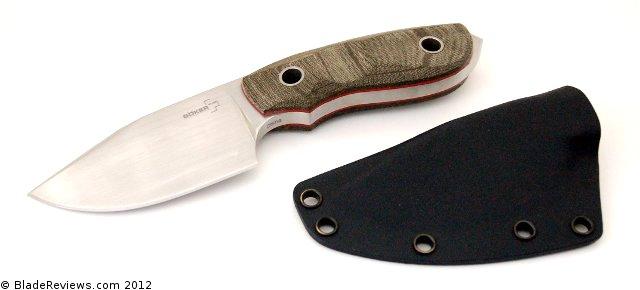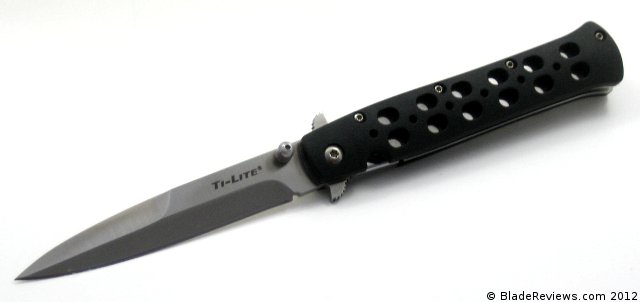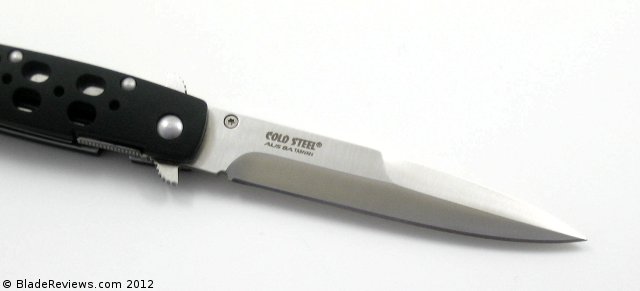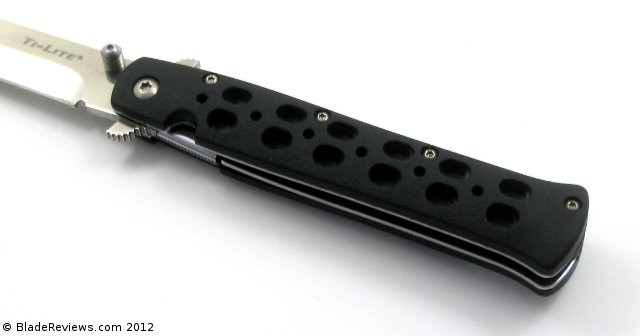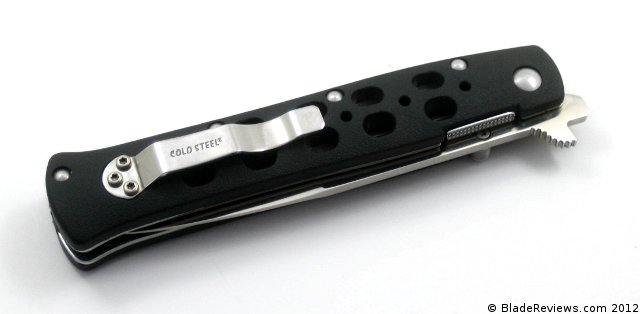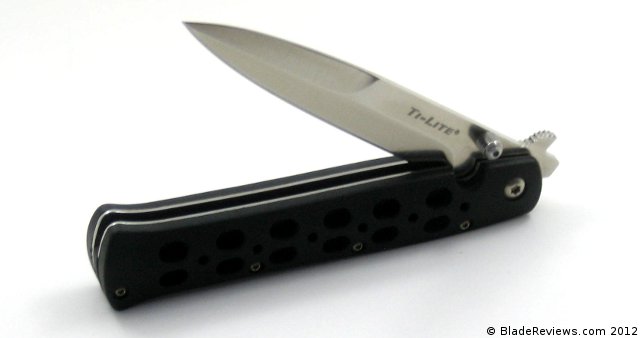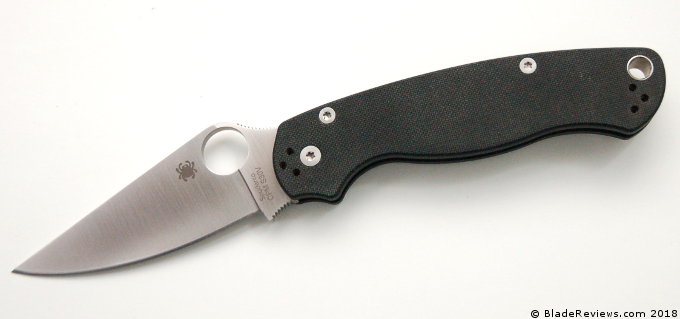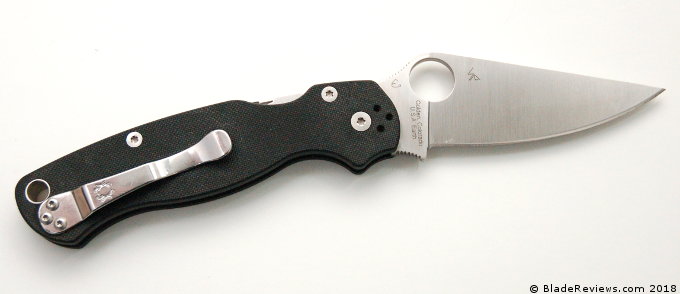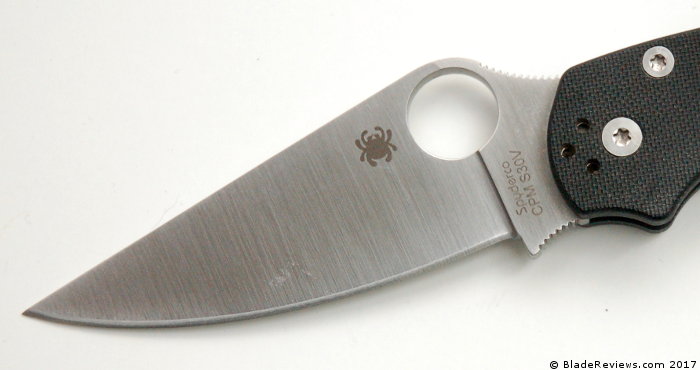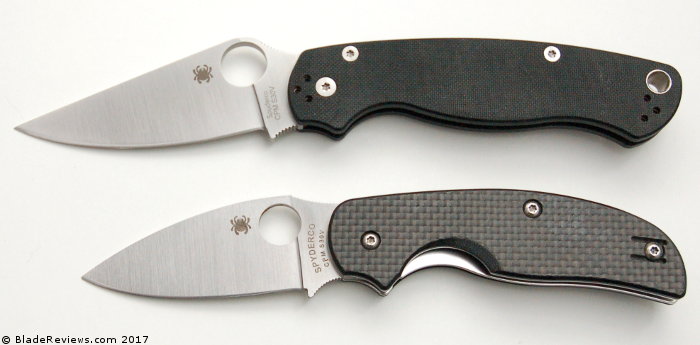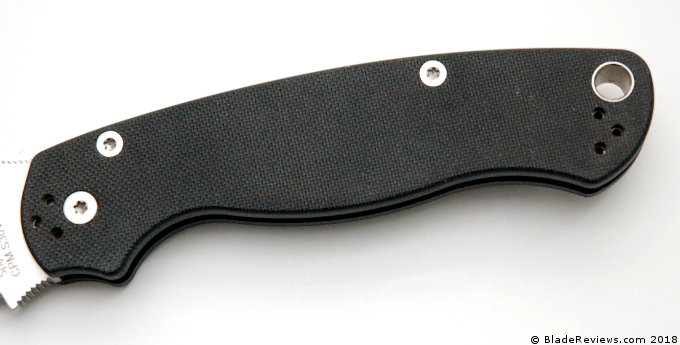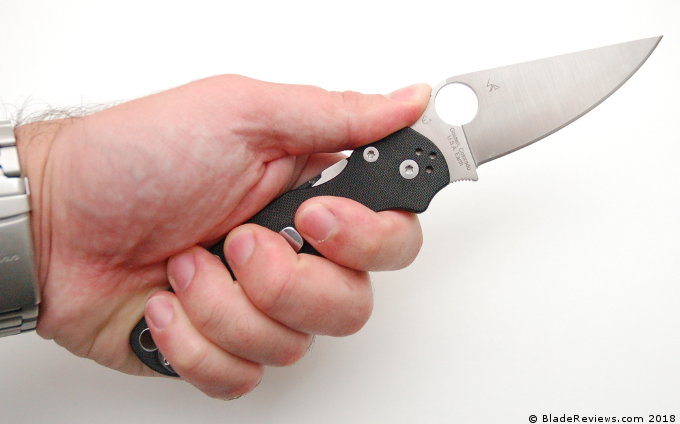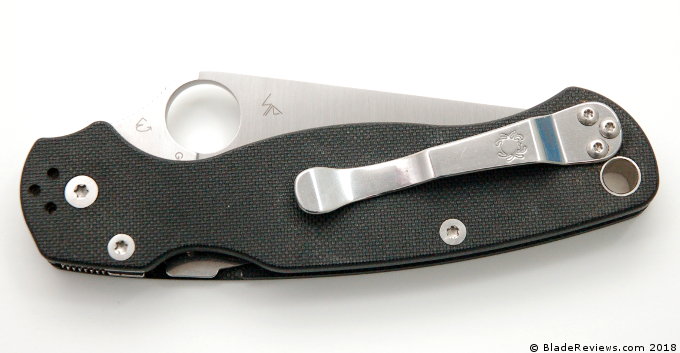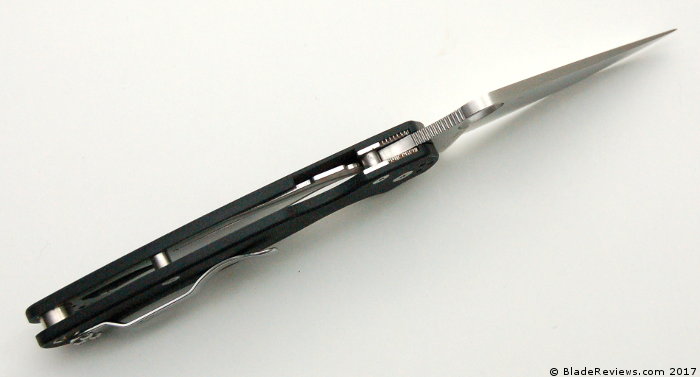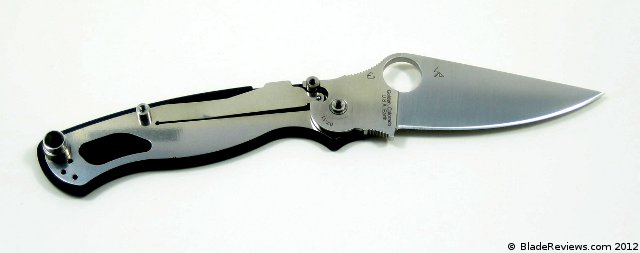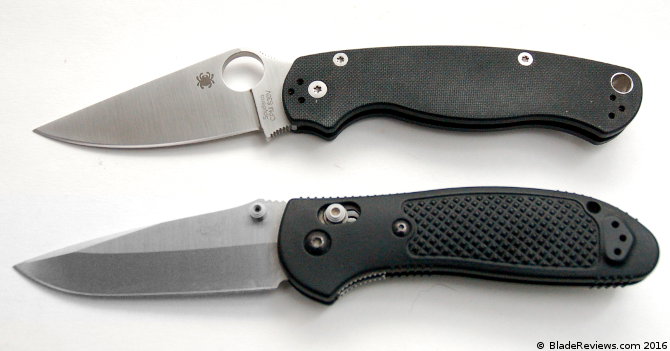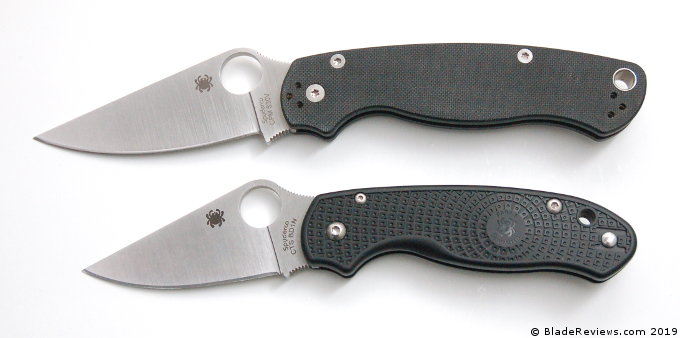Benchmade has always struck me as a company that both innovates and inspires. They can take a functional object, refine it’s performance, and give it a slight twist to elevate a knife something beyond mere G10 and steel. That is a rare accomplishment in the world of production knives, and this handsome 581 Barrage a perfect example.
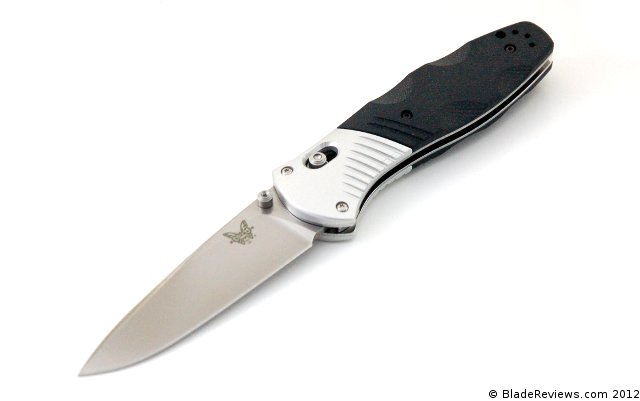
Buy the Benchmade Barrage at BladeHQ
Simple, robust, and crafted with just a touch of class, I absolutely love the details on this knife. And the details are always so glorious. That’s why I keep reviewing Benchmade knives. They all but beg for a closer examination.
General Dimensions and Blade Details
The 581 Barrage has an overall length of 8.35″, a 3.6″ blade, and the knife weighs 5.2 ounces. This is another Warren Osborne design, and the man is a master for a reason – he’s designed yet another lightweight and functional knife. I’m going to classify this one mainly as a tactical knife, but it would make a nice larger EDC as well. Some might call this a “gentleman’s tactical knife,” and I don’t think there is anything wrong with simply collecting this one either!
The 581 sports a drop point blade, which is a departure from Warren’s usual designs for Benchmade. This is a long sloping blade with a slight amount of belly and a thin swedge running along the top. The blade stock on this knife is 3mm thick, and the resulting tip is quite sturdy. This isn’t a knife with a ton of belly, but it should be fine for most normal tasks. The grind is either a partial flat grind or a shallow hollow grind, it’s difficult for me to really tell, and I don’t think it particularly matters. Either way I’ve found the knife to be a very capable slicer (and it came wickedly sharp).
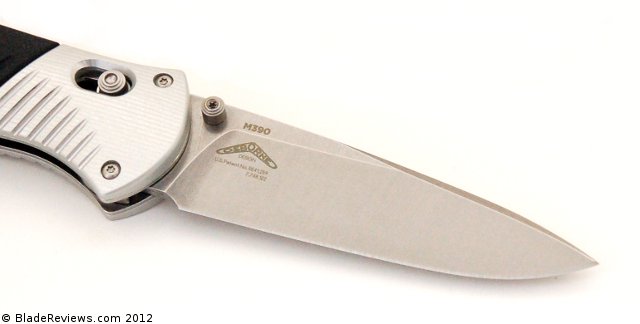
Blade steel on the 581 is Bohler M390. This is a powdered steel, and is currently the most advanced blade steel that Bohler makes. Benchmade heat treated this M390 to between 60-62 HRC, and the stuff can really retain an edge. It’s also a high Chromium steel so you have excellent corrosion resistance too. My edge has held up so well that I’ve yet to need to sharpen this knife, despite weeks of carry. I understand that when the time does come to touch up my edge, it will take a fair amount of work. That’s to be expected from a hard and tough super steel like this.
Handle, Ergonomics and Pocket Clip
The handle construction is one of my favorite features of the knife. I know some won’t be fans of the aluminum bolsters, but it’s a unique look and I really like it. From a practical standpoint, this isn’t a cold weather knife (since there is bare metal on the handle) but down here in Florida I’d say it compliments my shorts and sunglasses nicely. Construction is screw together, and in addition to the combination of G10 and aluminum scales, you have full stainless steel liners (milled out to reduce weight), a full backspacer, and a small lanyard hole. It’s a beautifully constructed handle.
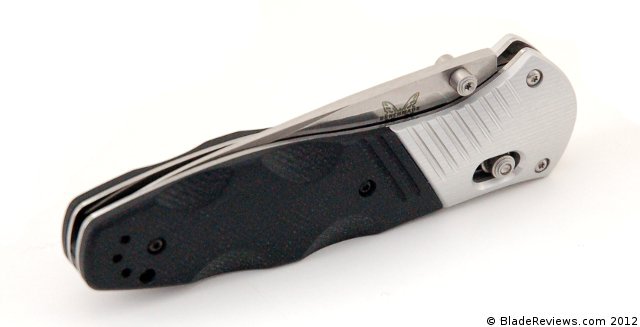
All in all, I’d say the ergonomics on the 581 are quite good. I mentioned the handle is boxy, but that doesn’t mean it’s uncomfortable. There is a good amount of thickness to the handle and it fills the hand nicely. The finger choil region benefits from some grooves that have been milled into the scales. I thought these were merely decorative at first, but they also provide some traction for your index finger. The thumb ramp is completely naked, and I feel like this is another Benchmade design that could benefit from a little jimping (at the slight expense of aesthetics). If you really wanted some traction, you could always cut little slice of skateboard tape and apply it to the thumb ramp. Since this is a tactical knife you may be interested in how the 581 feels in reverse grip – I’m happy to say it feels great. All in all this is a very comfortable knife. I’m not as fanatical about jimping as some, but do I feel like a little jimping on the thumb ramp would round this one out in hand.
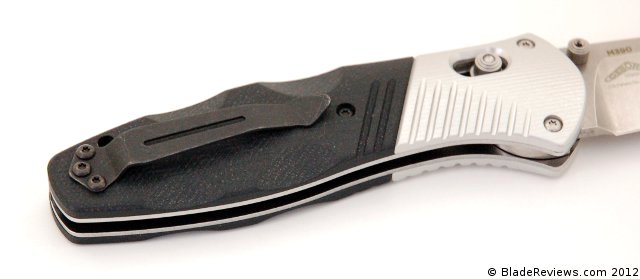
The pocket clip is a classic Benchmade “split arrow” clip. It’s a great clip, proven time and time again in many of my other Benchmade knife reviews. Retention is excellent, it’s a nice discrete clip, and the knife rides low in your pocket. You have the option of ambidextrous tip up carry – which works great for me.
Deployment and Lockup
The 581 is an assisted opening knife that makes use of dual thumb studs. This is my first review of an axis assisted opener, and I must say I’m quite pleased with it. For normal use I think an assisted opener on a well made knife is unnecessary, but for a tactical knife it could mean the difference between life and death. The thumb studs are very easy to reach and with a little pressure the blade springs to life. This is a very smooth and very fast deploying knife.
One thing I found extremely interesting about the 581 is that Benchmade covered the pivot with the bolster. So this isn’t a knife that has been designed to be tuned. It basically says “we turned this knife perfectly from the factory, you will never need to service the pivot.” It’s a bold claim, especially for an assisted opener that exerts so much force on deployment. But I’ll tell you, I have no problems with blade centering at all. The knife locks up like an absolute vault, and the blade travels smooth as silk along phosphor bronze washers. And the tolerances on this knife are very very tight. We are almost talking Sebenza tight here. This is a real testament to Benchmade’s quality control and manufacturing capabilities. It’s incredible.
And of course the lock here is the famous Axis lock. The assisted opening makes 1-hand closing something of a challenge but it’s not impossible. Lockup is absolutely rock solid. The Axis lock has yet to fail me – on any knife. This is a fantastic lock and it rounds out a great knife.
Benchmade 581 Barrage Review – Final Thoughts
Well, there you have it, Benchmade has produced another outstanding knife. By this point in the review half the readers probably assume I’m on their payroll or something, but truthfully I can’t find much to fault with this blade. I love the beautiful lines, the rich details, the excellent materials, and the incredible level of fit and finish. And it never hurts to discover that this knife is made in America. I can’t find a single issue with my knife, although I feel a touch of jimping on the thumb ramp would make the Barrage slightly better in hand.
I know this is a fairly expensive blade with a retail price of around $200, but I feel like this is an instance where you truly get what you pay for. For those out there considering a Benchmade 581 I can totally recommend it. Benchmade has once again taken a humble folding knife, applied their magic, and have created something that appeals to users and collectors alike. Having a 581 in my collection has truly been a pleasure.
- HIGH-QUALITY: The 154CM stainless steel blade is tough, rust resistant, and holds an edge well. The Valox handle is strong and stable, making it ideal for everyday use.
- WELL-DESIGNED: The Barrage family is the first to feature the AXIS Assist. The Barrage 583 can be opened and closed quickly with either hand.
- ALWAYS READY: The 583's quick, one-handed opening makes it easy to hold and use. The reversible pocket clip offers ultimate accessibility.
- VERSATILE: The Barrage 583's tanto blade has a very high tip strength, making it good for tactical uses. It's also versatile enough for everyday applications.
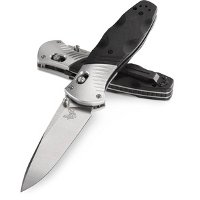
Benchmade 581 Barrage – $204.00
Retail Price: $220.00
from: BladeHQ
I recommend purchasing the Benchmade Barage from Amazon or BladeHQ. Please consider that purchasing anything through any of the links on this website helps support BladeReviews.com, and keeps the site going. As always, any and all support is greatly appreciated. Thank you very much.
